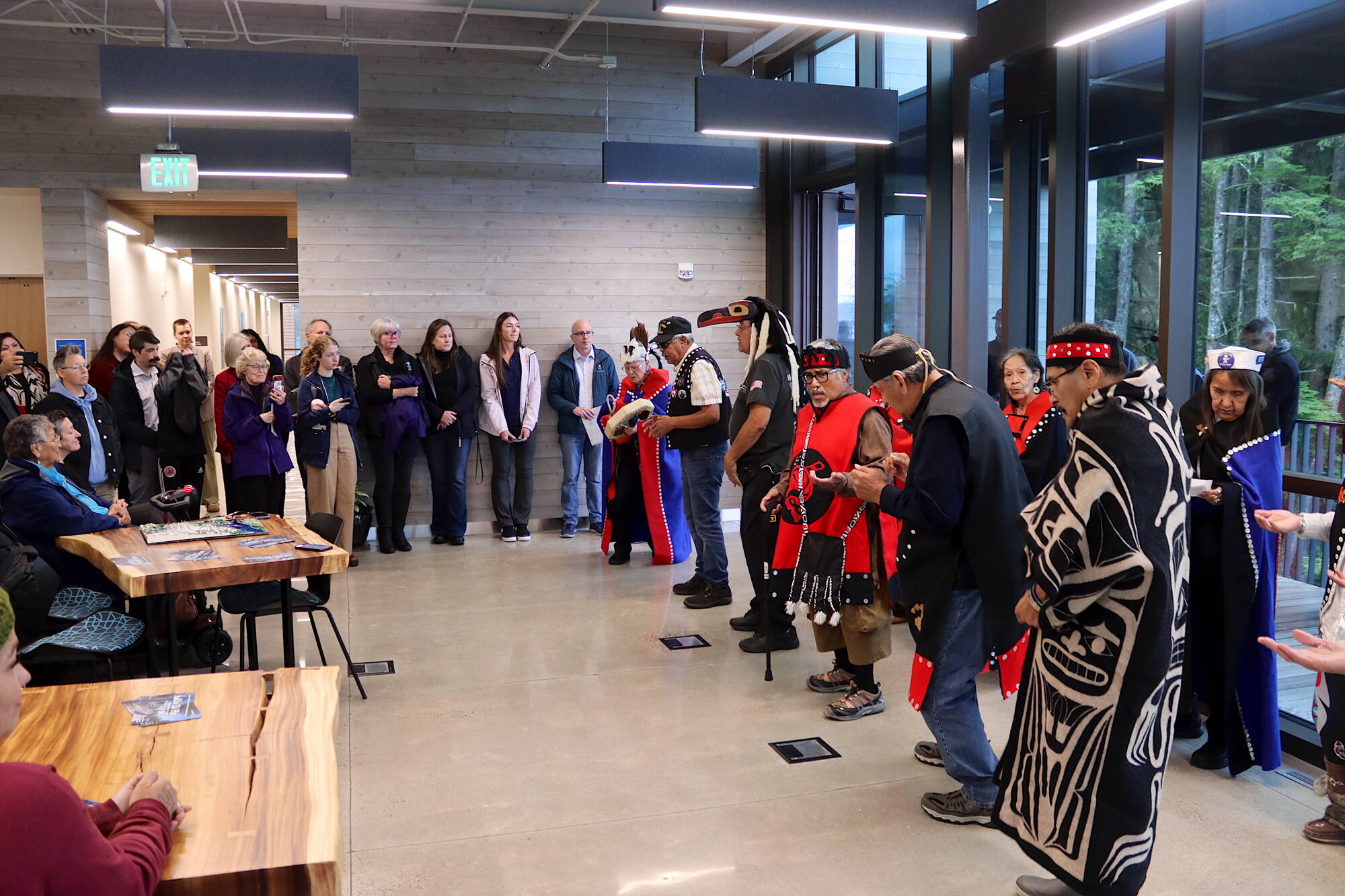A proclaimed state-of-the-art new science building at the University of Alaska Southeast is also highlighting a reliance on thousands of years of Indigenous knowledge to offer what Chancellor Aparna Dileep-Nageswaran Palmer called “a holistic way to study” during a ribbon-cutting ceremony Friday.
The Áakʼw Tá Hít building (which translates to “House at the Head of Áak’w (Bay)” in Lingít), the first structure at UAS to receive a primary name in Lingít, is located on the edge of Auke Bay next to the Anderson Building that houses the biology department. The new building’s primary focus is environmental science research, with facilities that include a wetsuit room where people can don gear and walk directly outside to the shore a short distance away.
The $16 million facility — across Glacier Highway from the main UAS campus — has been in the works since 2016, but its completion was stalled by the COVID-19 pandemic. Researchers and other staff began moving into the new building a few weeks ago. UAS notes the building also contains classrooms; an additional home for the Alaska Coastal Rainforest Center; a water and soil ecology lab; a forest ecology, glaciology and geophysics lab; and a geographic information systems (GIS) faculty.
During Friday’s ribbon-cutting — which began with a series of songs and dances by the Tlingit and Haida Elder Dance Group — Palmer said the new building “is a holistic way to study how interconnected everything is here in nature.”
“It also is a home for a variety of disciplines that are really connected with one another, even though we see them as separate,” she said. “Indigenous knowledge, literature, outdoor studies, biology, marine biology — all of these can actually be connected here in this building.”
The specific knowledge that can be gained from the Native people who have lived where the new building stands for many thousands of years was highlighted at the ribbon-cutting by Yaanishtuk Mike Tagaban, an Eagle moiety leader.
“Our ancestors used to be here hundreds of years ago, and we fish right off the point here, same place those trails are now, but they were smaller trails because they were brand new,” he said. “And we catch our fish, and we’d study how the fish were coming back. And as I understand the purpose of this building — part of it — I want to thank the university for their investment in the studies that are going to be performed out of this building to help us understand more about our environment, where our fish comes from.”
While local tribal, political and university leaders chatted and toured the new building following Friday’s ceremony, Wendy K’ah Skaahluwaa Todd was in her office working on a presentation about using doctors using traditional knowledge as well as Western medicine for healthcare. Todd, an instructor in environmental sciences and Native studies who comes from Hydaburg, said she plans to present her material at a conference in New Mexico next month.
“The knowledge I’m talking about is knowledge transfer is through oral traditions, songs, art, stuff like that, which isn’t considered a mode of transfer knowledge in Western science,” she said. In comparison, “Western science is a single knowledge system that presumes to be the only one.”
“And when we look at the world we have 5,000 dominant cultures. We have many subcultures within that that all have their own knowledge systems and languages. So to assume that all those knowledges are not relevant is kind of crazy. And what kind of scientists are we if we’re not using what people develop locally, because they’ve been there for a long time and they know what’s going on in the environment.”
• Contact Mark Sabbatini at mark.sabbatini@juneauempire.com or (907) 957-2306.

